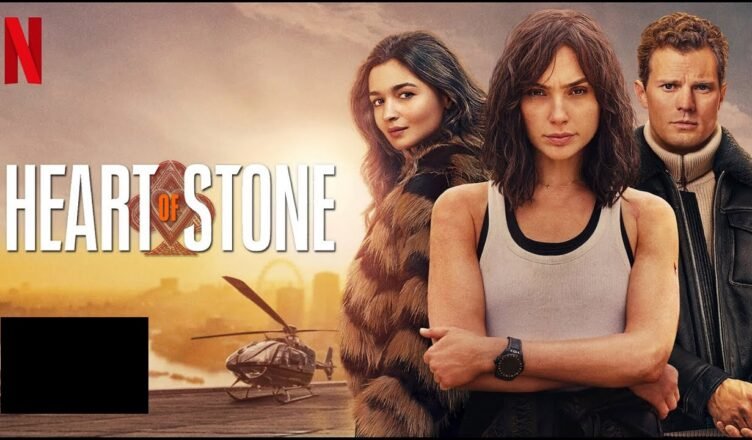Art and wildlife have shared a fascinating relationship for centuries. One of the most intriguing forms of this connection is known as the “art of the zoo”—the artistic representation of animals in their natural habitats, celebrating their beauty, behaviour, and diversity. From ancient cave paintings to modern digital illustrations, the art of the zoo has captivated humans, reflecting our deep-rooted fascination with the animal kingdom.
In this article, we’ll dive into zoo art’s rich history, purpose, and forms, explore notable artists, and discuss how this unique genre contributes to wildlife conservation and education. Whether you’re an art enthusiast, a budding artist, or someone curious about wildlife, the art of the zoo offers a meaningful perspective on both art and nature.
What is the Art of the Zoo?
The art of the zoo refers to artwork that captures the essence of animals—typically in settings that mimic or represent their natural environments. This art style spans various mediums, including painting, sculpture, photography, and digital illustration. The goal is often to depict animals realistically, highlighting their grace, power, and beauty.
Artists in this genre draw inspiration from visits to zoos, wildlife reserves, and national parks. Many artists view their work as a way to connect people with the natural world, bringing animals closer to those who may not have the opportunity to see them in the wild.
The Historical Roots of Zoo Art
The art of the zoo has been introduced previously. Human fascination with animals can be traced back to prehistoric times, as seen in ancient cave paintings. Over time, this interest evolved into more sophisticated forms of animal art.
Key Eras in Zoo Art History
- Prehistoric Cave Paintings: Some of the earliest known examples of animal art are found in caves, like those in Lascaux, France, where early humans depicted wild horses, bison, and lions. These paintings are thought to be over 17,000 years old.
- Egyptian and Mesopotamian Art: Ancient civilizations like Egypt and Mesopotamia also created detailed animal art, often portraying animals as symbols of power, protection, and divinity.
- Renaissance Animal Studies: During the Renaissance, artists like Leonardo da Vinci and Albrecht Dürer began to study animals more scientifically, sketching them in lifelike detail to understand their anatomy.
- 19th Century Naturalism: The 19th century saw a surge in naturalistic art, with artists like John James Audubon creating intricate paintings of birds and animals. This era laid the groundwork for modern wildlife art.
Each of these eras contributed to the evolution of the art of the zoo, building a foundation of respect, curiosity, and admiration for animals.
The Purpose of Zoo Art: More Than Just Aesthetics
While zoo art is undoubtedly beautiful, it serves multiple purposes beyond aesthetics. The art of the zoo has practical, educational, and emotional value.
Critical Purposes of Zoo Art
- Education: Zoo art helps educate the public about animals, especially species they might not see regularly. Art that accurately depicts animals can teach viewers about the animal’s appearance, anatomy, and behaviour.
- Conservation Awareness: By drawing attention to endangered species and the beauty of wildlife, zoo art can raise awareness about conservation issues and inspire action.
- Connection to Nature: Many people feel disconnected from nature, especially in urban environments. Zoo art offers a way to reconnect, creating an emotional bond between humans and animals.
- Scientific Documentation: Artists specialising in wildlife often document animals with high accuracy, contributing valuable data for scientific studies, especially regarding rare or endangered species.
Techniques and Mediums Used in Zoo Art
The zoo’s art encompasses various techniques and mediums, allowing artists to choose the best way to express their vision of wildlife.
Popular Mediums in Zoo Art
- Painting: Oil, watercolour, and acrylic paints are standard in zoo art. These mediums allow for realistic, detailed renderings of animals.
- Sculpture: Bronze and clay are famous for creating lifelike animal sculptures, often displayed in parks, zoos, or museums.
- Photography: Wildlife photography captures animals in real time, requiring patience and skill to get the perfect shot.
- Digital Art: With technological advances, digital illustrations have become a popular medium for creating vibrant, detailed images of animals.
Techniques in Zoo Art
- Realism: Many zoo artists focus on realism, striving to portray animals as accurately as possible.
- Expressionism: Some artists take an expressive approach, emphasizing certain features or using vibrant colours to convey the animal’s energy.
- Minimalism: Minimalist zoo art strips down the subject to its essentials, often highlighting the form or movement of the animal with few details.
Famous Zoo Artists and Their Contributions
The art of the zoo has attracted numerous talented artists, each bringing their unique style and vision. Some of these artists are renowned for their contributions to wildlife art, and their work continues to inspire and educate.
ArtistContributionNotable Work
John James Audubon Detailed studies of North American birds “The Birds of America”
Robert Bateman Realistic wildlife paintings with conservation focus “Chief” (Bald Eagle Portrait)
Albrecht Dürer Renaissance animal sketches and engravings “The Rhinoceros”
Beatrix Potter’s Whimsical illustrations of animals in the stories “The Tale of Peter Rabbit.”
David Shepherd African wildlife paintings, conservation efforts “Tiger Fire.”
These artists have made lasting impacts on the art of the zoo, each showcasing animals in ways that inspire both wonder and respect.
The Role of Zoos in Supporting Wildlife Art
Zoos play a significant role in supporting the art of the zoo. By providing artists access to various animals, zoos offer them a unique opportunity to observe and study wildlife closely.
How Zoos Support Zoo Art
- Live Observation: In real-time, artists can observe animals’ movements, expressions, and behaviours.
- Workshops and Classes: Many zoos host art workshops and classes, helping artists develop their skills and engage with the public.
- Exhibitions and Sales: Zoos often feature wildlife art exhibitions, where artists can showcase and sell their work, with proceeds sometimes supporting conservation programs.
Zoos also collaborate with artists to create educational programs, using art to teach visitors about conservation and animal welfare.
How the Art of the Zoo Promotes Conservation
One of the most critical aspects of the art of the zoo is its role in promoting conservation. Artists who depict animals often become advocates for wildlife protection, using their art to highlight environmental issues.
Ways Zoo Art Supports Conservation
- Raising Awareness: Wildlife art can raise awareness about endangered species, encouraging viewers to learn more and take action.
- Fundraising: Many artists donate some of their earnings from zoo art to conservation organizations.
- Influencing Policy: By bringing attention to wildlife issues, artists can sometimes influence public opinion and policy decisions regarding animal protection.
The art of the zoo acts as a bridge between people and wildlife, reminding us of the importance of preserving the natural world.
How to Get Started with the Art of the Zoo
If the zoo’s art inspires you and you want to try it yourself, there are many ways to begin. Here are some tips to get started:
Steps to Begin Creating Zoo Art
- Visit Your Local Zoo or Wildlife Park: Observe the animals and take photos or sketches.
- Choose Your Medium: Experiment with mediums like pencil, paint, or digital tools to find what works best.
- Practice Realism: Focus on capturing accurate details, from fur textures to body shapes, to improve your skills.
- Study Animal Behavior: Understanding animal behaviour helps create more lifelike and meaningful art.
By practising and exploring, you can develop your style in the art of the zoo and contribute to this rich artistic tradition.
Why the Art of the Zoo Matters Today
In today’s world, where urbanization and technology often create a disconnect from nature, the art of the zoo has a unique role. It serves as a reminder of the beauty and importance of the animal kingdom, inspiring people to appreciate and protect wildlife.
The art of the zoo can help bring awareness to the environmental challenges animals face, from habitat destruction to climate change. Through art, we can bridge the gap between humans and animals, fostering empathy and understanding.
Final Thoughts on the Art of the Zoo
The art of the zoo is more than just a creative expression; it’s a powerful tool for education, conservation, and connection. From prehistoric cave paintings to contemporary digital art, humans have long been drawn to capturing the spirit of animals. This art form continues to evolve today, touching people’s hearts worldwide and inspiring action to protect wildlife.
Whether you’re an artist, a wildlife lover, or simply curious about the animal world, exploring the art of the zoo offers a rewarding way to connect with nature. By appreciating and supporting zoo art, we can help preserve the beauty of wildlife for future generations.




